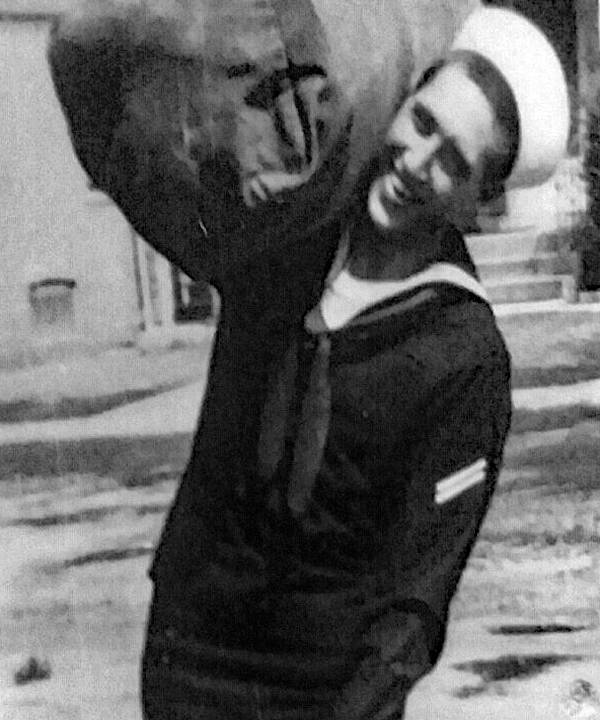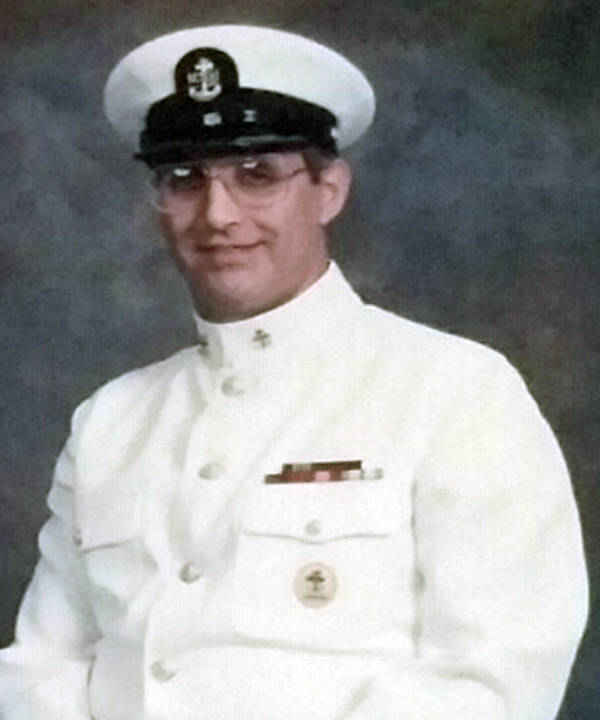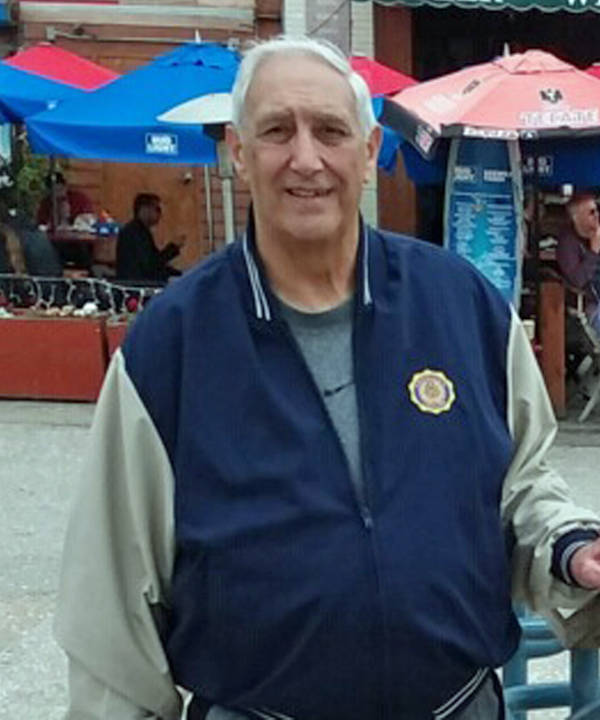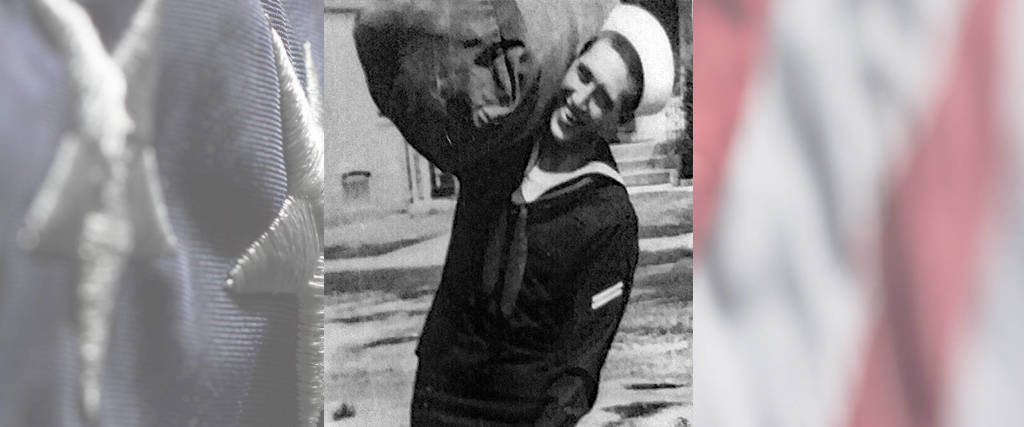U.S. Navy Vietnam War Orland Park, IL Flight date: September, 2019
By Nancy Angel, Honor Flight Chicago Veteran Interviews Volunteer
When Thomas Chambers was only 17 years old, he got his father to sign off and he enlisted in the Navy. He was sworn in on Flag Day, June 14, 1963. When asked how he chose the Navy, he says he never really thought about the Army or the Marines; he knew that he didn’t want to sleep on the ground or eat out of a can.

He went to Boot Camp at Great Lakes in Illinois, where he chose diesel mechanics as his specialty. Tom earned his GED before Christmas, and had a year’s worth of college credit by the time he turned 18 the following April. After Boot Camp, he was assigned to Saufley Field in Pensacola, Florida, where new naval pilots were trained. As an Aviation Boatswain’s Mate, he worked on the airfield fire department. He assisted in the safe landing of planes, as well as being on the crash crew when a landing went wrong. Six trucks went out and assisted in training at six outlying fields, in addition to their own airfield. During training drills, the firemen donned silver suits, helmets, gloves and boots. A plane would be placed in a pit with an aviation dummy inside, then started on fire. The men would shoot the fire with foam and then walk in, being careful not to kick up the flames, and “rescue” the dummy.
Tom remembers some of the real crashes as well. In one case, the pilot was thrown from the plane before it crashed into the trees. Tom and his crew ran into the trees to locate and rescue the pilot. In another incident, a plane crashed into the thick trees and started on fire. They couldn’t get a truck in, so the firemen had to use bottles of water to douse the fire. Unfortunately, by the time they reached the plane, the pilot had burned to death. Most of the time, Tom was involved in waving and directing airplanes in for safe landing. He had tools and equipment to safely assist pilots out of the planes in case of an equipment malfunction such as a landing gear not coming down. He did this assignment for about a year and a half, before transferring to the machine shop for six months.
Tom’s next assignment was Charleston, South Carolina, on the USS Umpqua (ATA-209), a seagoing tug. As are all Naval tugs, it was named after an Indian tribe. When he arrived in Charleston, he learned the ship was in Key West. After two plane rides and a Greyhound bus ride, he arrived in Key West to learn his ship was in a floating dry dock for overhauling. He spent his first three months on the Umpqua overhauling the ship and eating a lot of fresh fish and lobster. Homeported in Charleston, the Umpqua was a relatively small ship with a crew of 43. They travelled to every port on the east and gulf coasts; one of their jobs was to tow ships to the “mothball fleet” in Orange, Texas. In Orange, there was a large lake that served as storage for ships that were decommissioned, but available to be put back into service at a moment’s notice. The Umpqua also went into the Panama Canal Zone when towing ships from the East Coast to the West Coast. They would sail half way through the canal and transfer the ship to a tug from the West Coast which would tow it the rest of the way. Tom also recalls that there was a service ship that they towed every other month or so to Nassau, Bahamas, to conduct testing and surveys. The Umpqua would drop off the service ship, then spend about a week in the Bahamas.
Day-to-day life on the ship was busy and the work could be hard. When at sea, Tom worked an eight hour shift, seven days a week as a diesel engine man. In addition to his day shift, he worked a four-hour shift from midnight until 4:00 a.m. in the engine room. The temperature was extremely hot in the engine room, normally 100 to 120 degrees, and as much as 140 degrees when they were near the equator. The only relief from the heat was to stand under the blowers, but that didn’t help much. Tom recalls being on watch when a fuel line broke and was spitting hot diesel fuel all around the engine room. He had to call to the Captain on the bridge to stop the ship so they could shut down one of the engines. Tom was covered in diesel fuel, but fortunately they were able to shut everything down and repair the fuel lines without further damage or a fire. Although they worked hard on the Umpqua, the men also had movies every night and were able to go to Mobile, Alabama or New Orleans for liberty. After two years on the Umpqua, Tom had completed four years of active duty.
Following his discharge in 1967, Tom returned to Chicago and worked as a truck mechanic. While working, Tom ran into a truck driver who was also a veteran. As they talked, the man told Tom that his name was on a list the Navy was trying to contact. Tom hadn’t realized that when he enlisted, it was not actually for four years, but rather for six: four years of active duty, and two years of Reserves. So Tom went downtown to join the Reserves and served not only the two years required, but the next 29 years!
The next year, Tom served his annual two weeks active reserve duty on the USS Parle (DE-708), stationed at Navy Pier in downtown Chicago. Because the ship was steam powered, and not diesel, Tom worked in the shipfitters’ shop. This included welders, plumbers and woodworkers assisting in the installation of new equipment in the galley, while the ship cruised Lake Michigan. In subsequent years, he was assigned to Newport, Rhode Island and Little Creek, Virginia. One year, he was asked by an officer to spend his two week stint repairing the engines on a ship at Mayport Naval Station in Jacksonville, Florida. Tom finished the repairs on a Thursday and was discharged; the ship went out to sea on Saturday.

He was assigned to Jacksonville multiple times and also to the 32nd Street Naval Base in San Diego. On one occasion, his task was to put an air system on a boat for Navy divers who were training dolphins to look for mines planted under ships. During his one weekend a month of reserve duty, from 1981 to 1996, Tom ran the engine shop at Great Lakes Naval Station. Engines were brought in from both coasts for overhauling and servicemen were brought in from all the surrounding states for training. Tom retired from the Navy Reserves in 1996 as a Chief Engine Man. He enjoyed his time in the Reserves, seeing many interesting places and having many experiences, but especially he values the many friendships and relationships he formed. He says he would do it again!

A couple of weeks after he returned home from active duty in 1967, Tom’s grandfather called him and told him to come and pick him up, but his wouldn’t say where they were going. They ended up at the local American Legion. Tom joined and has been a legionnaire ever since. He has been with the Orland Park post since 2001, and has been Commander of the Post for five of the last seven years. He is proud of and enjoys his work with the Legion, helping to take care of veterans. He is involved with everything from lobbying Congress for benefits, to serving on the Honor Guard at veterans’ funerals. The Orland Park Honor Guard keeps busy, as they support funerals across the Chicago Southland as well as presenting flags and colors at the opening ceremonies for many local events and celebrations. Tom has attended many state and national American Legion conventions where he has had the opportunity to hear some distinguished speakers, including President Trump, Teddy Roosevelt IV and Vice President Pence recently at the national convention in Indianapolis.
Tom married his wife Joyce in 1970. They have two sons and six grandchildren. Tom appreciates that his training as a diesel mechanic in the Navy prepared him for his 40 year career as a truck mechanic. He retired in 2007, and enjoys spending time with his family and travelling with his wife.



